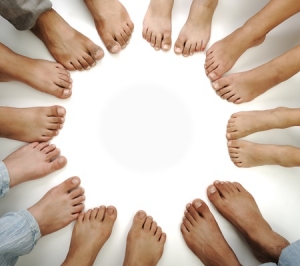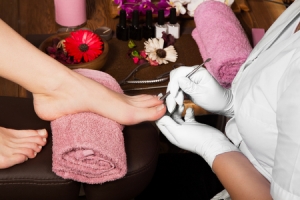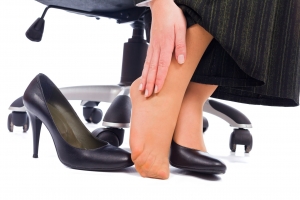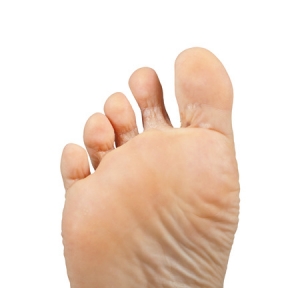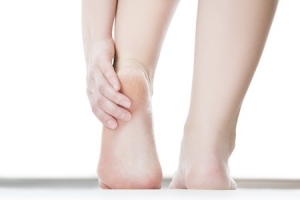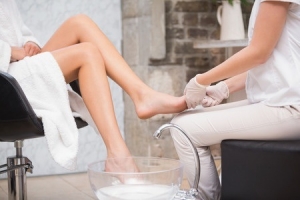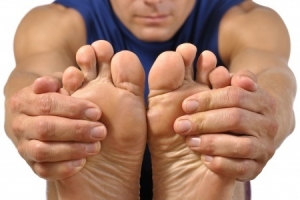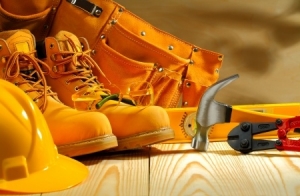Connect With Us
Blogs
Displaying items by tag: athlete's foot
Avoiding Common Pediatric Foot Problems
At Superior Foot & Ankle Care Center we find that most children’s podiatric issues result either from poor hygiene habits or overuse injuries related to sports activities. One of the difficulties in diagnosing and treating children is that they are not always able to articulate their symptoms or even identify the source of discomfort. Look for these indicators that your child may be experiencing foot or ankle pain:
- Limping or walking or running in an abnormal way.
- Not wanting to participate in sports or other active pursuits that they normally enjoy.
- Complaints of tiredness.
- An increased frequency of trips and falls.
If your child is showing any of these signs inspect their feet completely (but gently—the cause of the pain may be internal). If you notice anything unusual or you don’t see anything but it’s clear that something is wrong with your child’s feet, make an appointment at our Long Beach office so that one of our podiatrists, Dr. Victoria Foley or Dr. Constance Omelas can do a complete podiatric exam.
Practice Safe Sports
You can help prevent injuries and conditions caused by overuse by ensuring that your child has the correct shoes for the sport they are doing and that the shoes fit properly. When children are young it’s likely that they will need a new pair of shoes each season. Have your child’s feet professionally measured and don’t let them wear hand me down sports shoes. Be sure that children warm up and stretch before practices and games and that the conditioning program they are doing allows days of rest between workouts. Heel pain from plantar fasciitis or Sever’s Disease and Achilles tendonitis are some foot conditions that can be caused by too much repetitive activity from a sport or exercise program.
Teach Your Child Healthy Foot Habits
Plantar warts, athlete’s foot, fungal toenails and ingrown nails are also conditions that children commonly experience. These can be avoided if your child follows some simple rules:
- Let mom or dad trim nails appropriately—don’t peel nails or pull them off.
- Wear shower shoes or flip-flops at the town pool and when in gym locker rooms—fungal and bacterial infections are spread by direct contact.
- Don’t share shoes, socks, towels, nail files or any other items that touch someone else’s foot.
If you have questions about your children’s feet, contact us by calling: 562-420-9800.
Show Some Gratitude for Your Feet
It’s the season of Thanksgiving and here at Superior Foot & Ankle Care Center we think your feet deserve to be on the list of things that you’re thankful for! The 26 bones, 33 joints, 107 ligaments and 19 muscles in each of your feet work together in complex and amazing ways to enable you to do all the activities you enjoy. Why not show your feet some gratitude with one or more of these proactive podiatric health ideas:
Pay attention: Many times your feet are the starting place of diseases that affect your entire body such as diabetes, arthritis, circulatory and nerve problems. Get in the habit of inspecting your feet regularly and report any unusual changes to the foot doctor. Even more minor problems—ingrown toenails, warts, athlete’s foot—are more easily treated when caught in their earliest stages.
Do a shoe review: Are your shoes hurting your feet? Check to see that the shoes you wear have adequate arch and ankle support as well as cushioning for the sole. This will go a long way to preventing foot injuries and chronic conditions. Look for signs of wear and don’t continue to use shoes that are stretched out or have tears or loose stitching.
Have a spa day: pamper your feet with a relaxing foot soak. Then carefully trim toenails (straight across and not too short to avoid ingrown nails). Finish with a rich moisturizer massaged into your feet. If you prefer a salon pedicure just be sure to choose a place that follows proper sanitizing procedures for foot baths and tools to prevent fungal infections.
Watch your weight: being overweight puts excess strain and pressure on your feet and is a contributing factor in many foot problems. Maintaining a healthy weight will help reduce foot pain.
Get a checkup: When’s the last time you were in to our Long Beach office? Make an appointment by calling 562-420-9800 and let our podiatrists, Dr. Victoria Foley and Dr. Constance Omelas examine your feet. The foot doctor can alert you to any potential problems and make recommendations for ways that you can help keep your feet healthy.
Shoe Choice Affects Foot Health for Women
At Superior Foot & Ankle Care Center we treat many women with foot problems that could have been avoided by choosing different shoes. Today, there are many attractive shoe designs that do not harm your feet. Short-term fashion choices can lead to long term foot health problems. Below are 3 types of shoes to avoid:
- High heels—shoes with high heels (2 inches or more) can cause a host of foot problems. First, the height of the heel can cause wobbling and instability which results in ankle sprains. High heels put extra strain on the muscles and ligaments of the ankle as they struggle to keep your foot in proper position. Continuing to wear high heels after a sprain is likely to set up a dangerous cycle of repeated sprains, increased weakness and eventually chronic ankle instability and pain. In addition, the design of high heels forces your toes forward, causing them to spend long hours cramped and squeezed. This increases the risk of bunions, hammertoes and other toe deformities.
- Stiff backed pumps—shoes with an overly hard heel counter can lead to a condition commonly referred to as “pump bump.” Officially known as Haglund’s deformity, a hard, bony enlargement forms on the back of the heel. When the back of pump rubs against the growth it causes irritation and inflammation. In some cases the bursa sac surrounding the deformity can become inflamed causing bursitis.
- Flip-flops—yes, these are comfortable and oh-so-easy to slip on and off but flip flops provide no support whatsoever for your feet. This increases the risk of your feet coming out of the shoe and getting cut or scraped and also the chances of twisting an ankle. The one exception to this is in gyms, public pools, spas and other places where covering your feet prevents contact with fungi and bacteria that can cause athlete’s foot, fungal toenail and
If a part of your foot, toe or ankle is causing you pain or you notice other symptoms such as bruising, swelling or redness, contact our Long Beach office for an appointment by calling: 562-420-9800. Our podiatrists, Dr. Victoria Foley and Dr. Constance Omelas will examine your feet and prescribe the correct treatment (in addition to changing your shoes) to relieve pain and prevent further injury.
Athlete’s Foot 101
Although the risk for athlete’s foot is high during the summer due to the fact that patients go barefoot more often in public places, at Superior Foot & Ankle Care Center we see just as many cases as we move into the fall. Part of the reason for this is that the fungi that causes this infection (also known as tinea pedis) love warm, moist, dark places—like inside closed shoes and sweaty socks.
How do You Know if You Have It?
The symptoms of athlete’s foot are severe itching, burning and redness, along with dry scaly skin. The infection often begins between the toes but can also develop on the arches, soles or the sides of the feet. Left untreated, blisters may form and the condition can progress from annoying to painful. What’s tricky, however, is that the symptoms of athlete’s foot can mimic other conditions, such as psoriasis. In addition, there are different fungi that cause athlete’s foot, which may affect treatment. For those reasons, it’s important to get a skin rash on your foot looked at sooner rather than later. Our podiatrists, Dr. Victoria Foley and Dr. Constance Omelas will examine the skin on your feet and make an accurate diagnosis of the condition.
Treatment and Prevention
Both topical ointments as well as oral medications are available to treat athlete’s foot. The foot doctor will prescribe the treatment that will be most effective depending on the type and severity of your infection. Of course, the best scenario is not to get athlete’s foot in the first place! Some tips for avoiding athlete’s foot include:
- Do not share shoes, socks, towels or any other items that touch another person’s feet.
- Keep your feet from coming in contact with fungus by wearing shower shoes or flip flops in gyms, locker rooms, showers and other public places where people walk barefoot.
- Keep feet dry. Change your socks more than once a day if you tend to perspire heavily.
- Wash feet daily and dry completely, being sure to get the space between the toes. Apply a foot powder before putting on socks to help keep feet dry.
If you are concerned that you may have contracted athlete’s foot, contact our Long Beach office for an appointment by calling: 562-420-9800.
Psoriasis and Your Feet
August is Psoriasis Awareness Month and at Superior Foot & Ankle Care Center we want to offer our patients some information about this disease and how it affects your feet. Psoriasis is a chronic autoimmune condition that affects approximately 7.5 million Americans. In patients with psoriasis, skin cells are produced at an overabundant rate and cause red, scaly, itchy patches to form on the skin. There are two forms of psoriasis that most commonly affect your feet. One type causes the skin on your feet to become dry and scaly, the other, more severe, can also include pustules (blisters).
Triggers and Treatment
It’s important any time you see changes in the skin on your feet that you have one of our podiatrists, Dr. Victoria Foley and Dr. Constance Ornelas examine you. Psoriasis symptoms can mimic athlete’s foot and other conditions. If the foot doctor believes you have psoriasis, there are topical ointments and steroids that can be used on your feet to treat the condition. The foot doctor will also want to refer you to a doctor who specializes in psoriasis as this is a systemic disease that will require additional medical management.
While it’s estimated that 10% of the population are genetically predisposed to psoriasis, only 2-3% of those actually get the disease. Researchers believe that there are specific triggers that can cause psoriasis to flare up. Some steps you can take to avoid these include:
- Not smoking
- Limiting alcohol intake
- Consulting with your doctor about other medications you are taking (some given for high blood pressure, heart disease and depression may be triggers)
- Find ways to manage and reduce stress
- Wear comfortable shoes with adequate padding on the soles
- Protect your feet from injury and infection
Psoriasis is not contagious. If affects men and women at equal rates and most often develops between the ages of 15-35. If you are experiencing any unusual skin changes or symptoms, contact our Long Beach, CA office for an appointment today by calling: 562-420-9800. Most foot conditions will get worse, not better, if left untreated.
Summer Checklist for Preventing Children’s Foot Problems
Chances are with the end of the school year your child came home with readings lists and other summer work. At Superior Foot & Ankle Care Center we’d like to add one more list: a checklist for taking care of your child’s feet over the summer months. Summer brings a whole new set of activities and options for children, many of which can lead to foot trouble if the proper precautions are not taken. Here are our top tips for keeping children’s feet healthy this season:
Slather on the Sunscreen—many people forget to apply sunscreen to their feet. The skin on your feet is just as susceptible to the harmful effects of UVB and UVA rays as that on the rest of your body. On beach and pool days you should put sunscreen on the tops and bottoms of your children’s feet and reapply after swimming. If your children are wearing sandals or other open shoes and will be out in the sun shopping or sightseeing you should also put sunscreen on their feet then.
Pack the Flip Flops—summertime is high season for athlete’s foot, fungal toenails and warts, all of which are spread by direct contact with the virus, fungi or bacteria that cause them. If you are spending time at a community pool or local beach make sure your child keeps their feet covered around the pool and in changing areas and bathrooms—these are prime hangouts for fungal infections. Encourage your children not to share shoes, socks, towels or any items that touch someone else’s feet.
Inspect Shoes—be sure that your child is wearing shoes that match the activity they are participating in. While flip flops are good for the pool, they can lead to injury if used for playing whiffle ball or other casual summer sports. Also keep an eye on fit—children’s feet grow fast and time spent squeezed into shoes that are too tight can increase the risk of ingrown toenails and fungal infections.
Keep it Clean—wash your children’s feet at the end of every day with a mild soap and warm water. Be sure to dry completely as well, especially between the toes. Trim toenails straight across with no curved edges. If your child’s feet sweat excessively, consider a foot powder to help keep them dry.
If when caring for your child’s feet you notice anything unusual or concerning, or if your child complains of foot pain, don’t hesitate to contact our podiatrists, Dr. Victoria Foley and Dr. Constance Omelas at our Long Beach office by calling 562-420-9800. It’s always better to get a foot concern checked than to wait and have it develop into a serious issue. Enjoy the summer and keep your children’s feet safe!
Pointers for Safe Pedicures
Who doesn’t like showing off one of the season’s newest colors on their toes? Besides, getting a professional pedicure is a relaxing treat. Bacterial and fungal infections, such as athlete’s foot and fungal toenails, however, are not particularly enticing. At Superior Foot & Ankle Care Center we want our patients to be able to enjoy this pampering experience safely and so we have compiled some tips below to help prevent infections.
First, however, it’s important that you inspect your toenails and make sure that you do not currently have any problems. If you have a toenail that is discolored, thick or crumbly, do not attempt to cover it up with nail polish. These may be signs of a fungal infection that requires treatment. If the appearance of one of your nails is concerning you, contact our Long Beach office by calling: (562) 420-9800 and let our podiatrists, Dr. Victoria M. Foley or Dr. Constance Ornelas examine your toenail. Fungal infections will not go away without treatment.
If your nails are all clear and you wish to have a professional pedicure, observe the suggestions here to minimize any risk of fungal or bacterial infections:
- Bring your own nail tools and flip flops. The ideas is to not come in contact with items that have touched other people’s feet. Fungal toenail and bacterial infections are spread by direct contact.
- Look for a license. Reputable salons are licensed by the state, which means they adhere to specific health and sanitary standards. The license should be prominently displayed in the salon.
- Check out the cleanliness of your salon. Foot baths and tools should be cleaned and disinfected after each customer. Nail technicians should wash their hands before starting on a new client and the floors, work stations and rest room should all be clean.
- Refrain from shaving your legs 24 hours before getting a pedicure. Shaving creates tiny cuts in the skin which can allow bacteria to enter. For this reason, if you have any open cuts or blisters on your toes, feet or legs, you should also wait until they have healed before getting a pedicure.
Hidden Risk for Men with Diabetes
Did you know that when it comes to self care for patients with diabetes that men are far less likely than women to follow the podiatrist’s instructions? In honor of Men’s Health Month we at Superior Foot & Ankle Center want share some important ways that men (and the women who love them) can greatly reduce their risk of serious diabetic foot complications.
One of the biggest health threats for diabetic patients is an open wound or ulcer. Due to poor circulation and decreased immune system function even seemingly minor cuts or injuries can rapidly become major problems. Infections can develop that are very difficult to heal, leading to serious debilitation and even amputation. To reduce the risk of injury and infection, follow these tips:
Inspect your feet daily: since diabetic patients often have nerve damage which makes it difficult to perceive pain and other sensations, visual examination of the feet becomes very important. If you notice any unusual bumps, red spots, blisters, changes in color, size or shape of the foot you should let our podiatrists, Dr. Victoria Foley and Dr. Constance Omelas know ASAP.
Don’t go barefoot: wearing some type of footwear will reduce the risk of toenail and skin infections since these are transmitted by direct contact. You will also decrease the chances of injuring your foot by banging into something or stepping on a sharp object.
Practice good hygiene: wash your feet daily with warm (not hot) water and a mild soap. Be sure to dry thoroughly, especially between the toes, to help prevent athlete’s foot. Sweat glands can also be affected by diabetes. If feet are dry, be sure to apply a rich moisturizer to prevent cracking. Patients who sweat excessively should use a foot powder to help keep feet dry.
Prevent ingrown nails: keep toenails trimmed short and straight across—curved edges can grow down and back into the skin around the nail bed, opening a doorway for bacteria. If you do develop an ingrown nail, don’t attempt any “bathroom surgery!” Allow the podiatrist to take care of the nail.
Following these simple steps can greatly reduce the risk of disability and health issues from diabetes. If you have questions or are experiencing any unusual symptoms in your feet contact our Long Beach office for an appointment by calling: 562-420-9800.
Facts about Alcoholic Neuropathy
Neuropathy refers to nerve damage. One source of neuropathy in the feet is alcoholism. It’s important for patients to be forthcoming with the foot doctor about alcohol intake. In honor of National Alcohol Awareness Month we at Superior Foot & Ankle Care Center would like to offer the following facts about alcoholic neuropathy:
- The ethanol found in alcohol damages nerve tissue.
- In addition, poor diet and lack of certain vitamins (also common in alcoholics) can contribute to nerve damage.
- Symptoms of alcoholic neuropathy include: loss of sensation and numbness, tingling, pain, burning, muscle spasms and muscle weakness.
- Nerve damage caused by overuse of alcohol is usually permanent.
- There are other possible causes of neuropathy that our podiatrists, Dr. Victoria Foley and Dr. Constance Omelas will need to rule out. They will start by examining your feet and may order blood or other tests such as nerve conduction and nerve biopsy.
- Potential dangers of alcoholic neuropathy include greater likelihood of injury due to lack of sensation. Similarly, conditions such as athlete’s foot can progress to the point of open sores because the patient does not perceive the symptoms in their earlier stages. Infections are more likely to develop in these scenarios. Muscle dysfunction can increase the chance of falls.
- There are treatment options available to lessen the symptoms of alcoholic neuropathy such as B vitamins, prescription medications for pain, galvanic stimulation, magnetic therapy and orthotic inserts.
- To prevent further nerve damage from occurring, patients with alcoholic neuropathy must stop drinking. If you want information on treatment for alcoholism you can ask the foot doctor for a referral or visit ncadd.org.
If you have noticed signs of neuropathy in your feet or have other questions about this condition contact our Long Beach office to schedule an appointment by calling: 562-420-9800.
On the Job Care for Your Feet
Would you believe that the National Safety Council reports that there is an average of 180,000 foot injuries on the job each year? At Superior Foot & Ankle Care Center we want our patients to be proactive about the health of their feet at all times. Most patients spend a large percentage of their waking hours at work yet don’t give much thought to the health and safety of their feet in the workplace setting. Preventive health care for your feet at work falls into two categories: injury and overuse.
Injury
Injury to your feet on the job can come about as a result of the materials you are working with or the site of your work. Construction workers and those who work at sites where there is much debris and loose rock or other material on the ground need properly fitting shoes or work boots to support feet and ankles and minimize the risk of falls and ankle sprains. Another statistic from the National Safety Council showed that of the workers who suffered a job-related foot injury only about 25% were wearing protective footwear. Work boots with hard toe boxes protect against tools and heavy items being dropped on them. If you work with hazardous materials, chemicals or liquids at high temperatures you will want to take the proper precautions to protect your feet as well as the rest of your body.
If you wear work boots every day you may find it beneficial to have a second pair to trade off with to prevent repetitive stress to the same areas of your feet and to minimize the risk of athlete’s foot and other fungal infections that can breed in dark, sweaty boots. A day to air out between airings can reduce this risk significantly.
Overuse
The second source of workplace stress on the feet is overuse. Jobs that require long hours of standing or a significant amount of bending or climbing put stress on your feet. Be sure to take breaks throughout the day and elevate your feet (if you can’t do at work be sure to do when you get home) to reduce swelling. Many conditions are caused or made worse by standing for long periods of time. You will want to take the time to have the shoes you wear for work professionally fitted and be sure they are of high quality and provide good arch support and cushioning where needed.
Our podiatrists, Dr. Victoria Foley and Dr. Constance Omelas can make specific recommendations for appropriate footwear for you based on your foot condition and the work you do. Don’t hesitate to contact us for a consultation with the podiatrist at our Long Beach office by calling: (562) 420-9800. After a hard day’s work, your feet will thank you!
